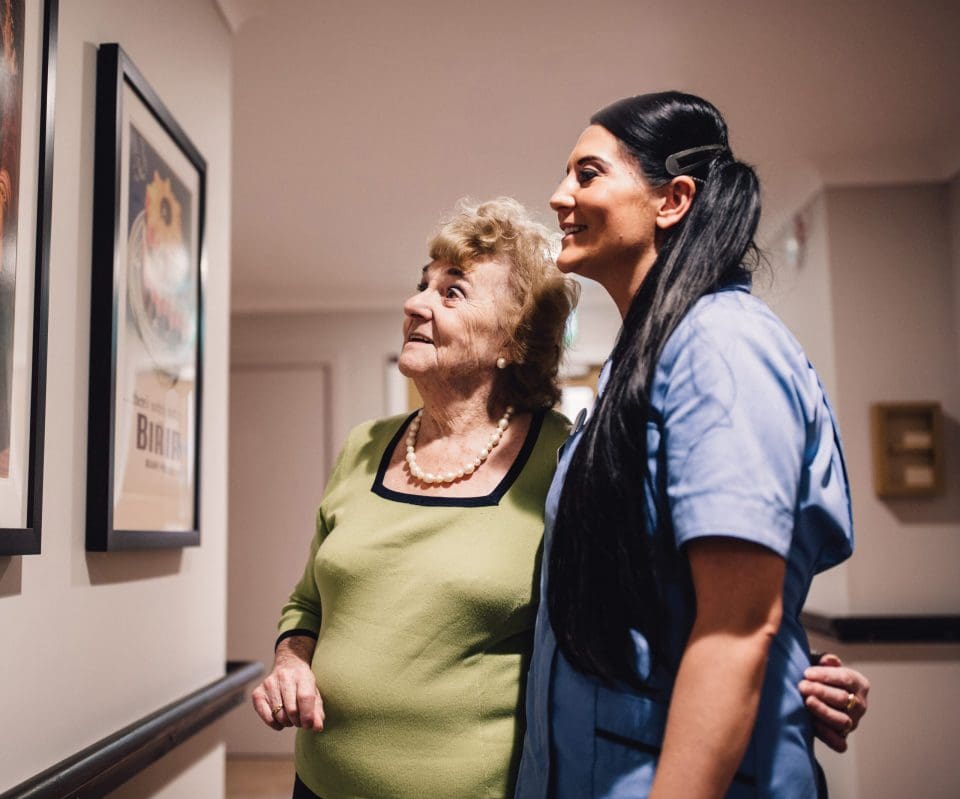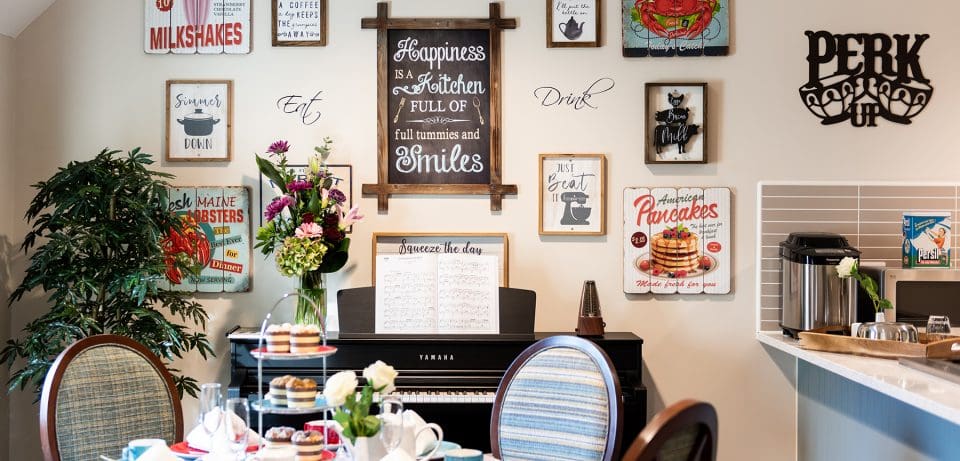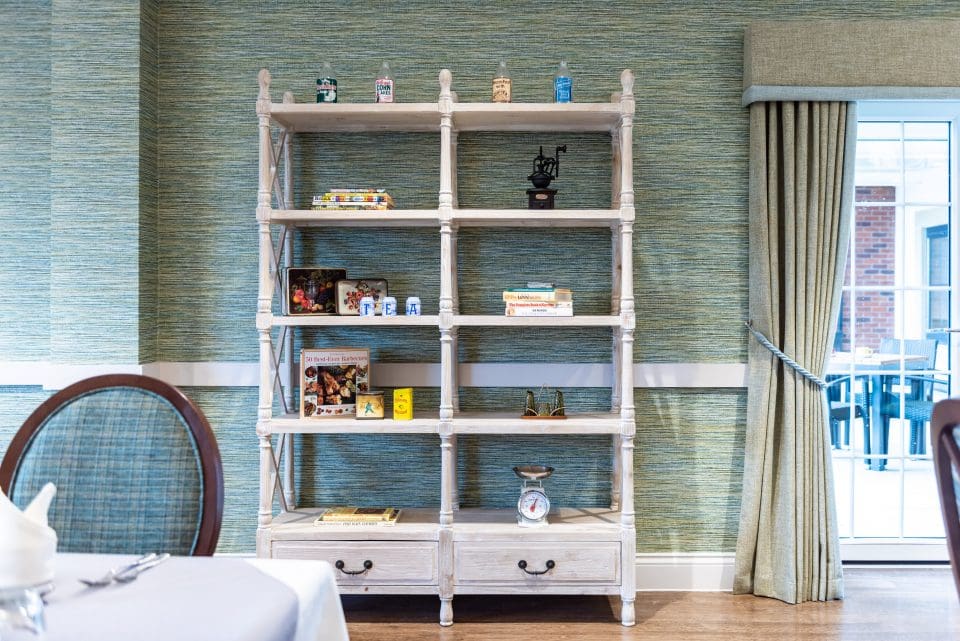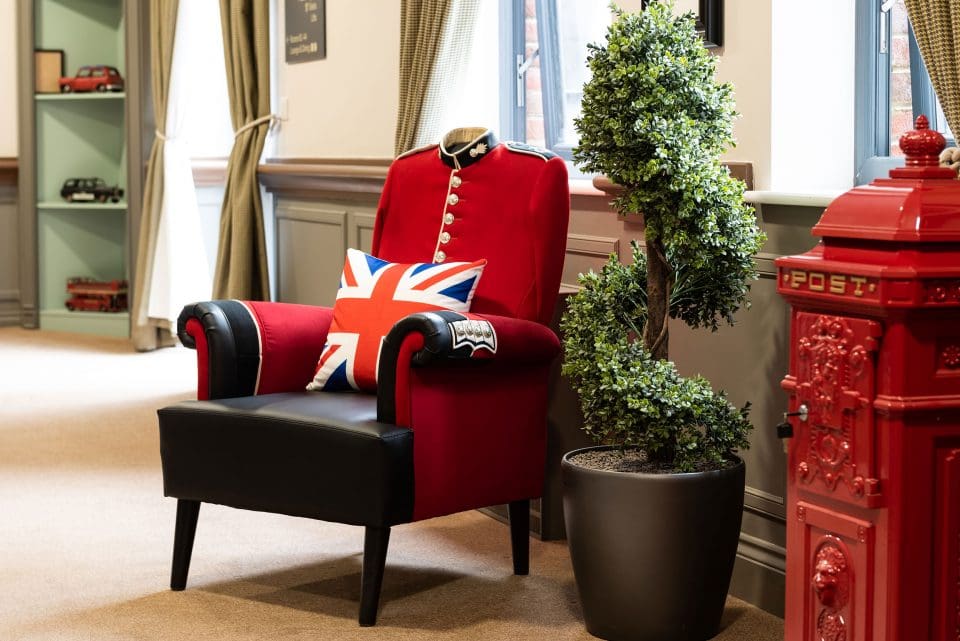Signposting and Wayfinding The use of visual cues for people living with a form of dementia
One of the most common causes of dementia in adults is Alzhemer’s disease, which progresses from a preclinical stage where people exhibit minor symptoms such as poor judgement in decision making and general confusion.
Eventually this will develop to a stage of severe cognitive decline with symptoms such as losing track of dates, loss of initiative and spontaneity, memory loss affecting daily routines, communication problems, disorientation and being unable to navigate around otherwise familiar landscapes.

Spatial disorientation
Spatial disorientation is one the first things reported by people with Alzheimer’s disease. This is because Alzheimer’s first affects the part of the brain responsible for storing and encoding spatial memories. People become confused and find it hard to remember and learn routes in unfamiliar environments, and then later in more familiar territories such as their own home.
Whilst people will begin to develop location-identifying issues, they may also suffer from delusions, mild hallucinations and time-shifting. Sometimes carers of a loved one with dementia talk about being called by another person’s name such as that of a relative or friend who they may associate with a particular place. This is triggered by a confusing network of memories linked to memorable times and places all coming together in a mishmash of thoughts.

What is wayfinding?
In general terms wayfinding can be defined as spatial problem solving, in other words knowing where you are in a building, knowing where your desired location is and how to get there.
Wayfinding problems in people with a form of dementia can cause anxiety, distress and lead to low levels of self-esteem and interaction. Most people will remember a time in their childhood when they may have become separated from a parent in a busy shopping centre, for example. Just trying to see through all the unfamiliar sea of legs immediately caused fear and panic. That feeling of strangeness and disorientation is just how a person with wayfinding problems feels when they are in an unfamiliar environment.
After a period of time and as the wayfinding problem persists one would find themselves relying more and more on others to help them with normal everyday tasks such as finding their way to the bathroom or navigating to different areas in their own home.
If not looked after well and with compassion, then eventually they will lose more and more of their independence impacting their dignity, confidence and overall mental wellbeing.

Creating a dementia-friendly environment
In some environments which are nondescript setting apart different locations can be difficult. This is made worse if all the corridors look the same, carpets and floors are the same colour or the same ornaments and decorations are used throughout, and in generally the same place such flowers and mirrors.
Design features, such as similar doors along a corridor, lack of focal points and poorly planned signage can all result in a poor environment.
Communal areas are important part of a home and should be laid out to make it easy for residents to find their way around the building. It is essential that residents are able to locate their own private space and identify how to get to a toilet from wherever they are. They should know where and how to find help and ask for assistance. Creating different seating areas offers a choice of where to sit and encourages engagement with the environment and more social interaction.
Special ‘sensory areas’ are proven to be highly beneficial to those with dementia. They can help them to calm down, stimulate emotion and even improve coordination.

Cinnamon Dementia Strategy
- A team that is trained in the fundamental principles of dementia care and led by a dementia specialist
- Care that celebrates the uniqueness of every individual
- Daily activity and living experiences that are geared to the people we are caring for, and which represent their life’s journey
- Personal and shared living spaces that are homely, comfortable and reflect the personalities that live there
- A pleasurable dining experience that is built around the needs and preferences of every individual
- Support to family and friends so that they can understand and participate in the care that we deliver
- Ongoing development of the way we do things; working with professionals to keep in touch with research and innovation
- Supportive, compassionate care until end of life

“Celebrating the uniqueness of the individual, and caring with compassion.”
Find out more about Cinnamon Dementia Care here

